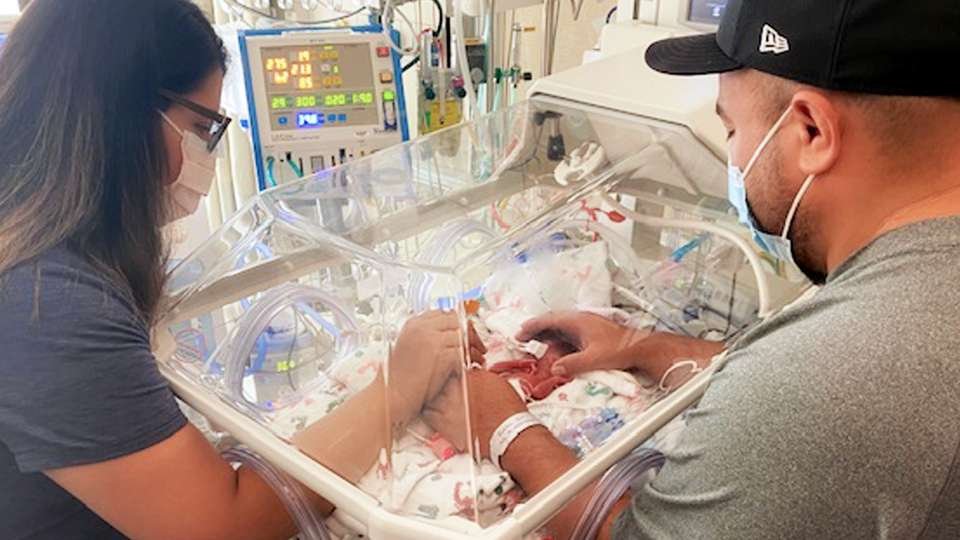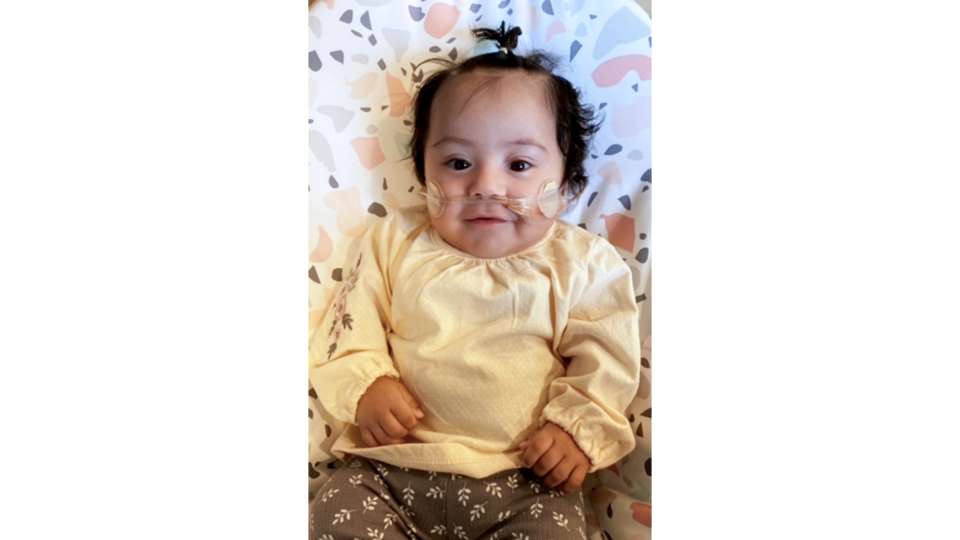
When Lizet Robles found out she was pregnant with her third child, she was surprised but not concerned. Her sons — Sergio, 13, and Anthony, 11 — were both born full-term via cesarean section, so she expected this new baby would follow that pattern.
During the first few months of pregnancy, everything seemed normal. Robles had to take supplemental progesterone because her levels were a little low, but other than that, things were going smoothly.
Then, around week 21 of her pregnancy, Robles noticed some clear vaginal discharge. She went to a local emergency room where she was told not to worry; everything looked normal.
“But something inside of me said it didn’t seem right,” she remembers.
So she made an appointment with an OB-GYN, who said her cervix was already dilated by 2 centimeters. She was referred to specialists at UW Medicine, then admitted to UW Medical Center – Montlake on bedrest. Doctors hoped to perform a procedure that would close her cervix, but ultimately determined it was too risky.
A few days later, she went into labor.
An early birth and a fighting chance
A C-section at just 22 weeks was out of the question, so Robles had to deliver vaginally. She spent most of the day having contractions and then, suddenly, her daughter was born on the labor and delivery unit, stabilized, and transported in a transport incubator to the neonatal intensive care unit (NICU).
“I felt a gush of blood and she came. The team ran into the room and took her away. She was breathing on her own but they did have to intubate her right away because she was so little,” Robles says.
Most babies are born around 40 weeks, and any born before 37 weeks are considered premature. Babies born before 28 weeks are considered extremely preterm. Premature babies born less than 23 weeks’ gestation usually don’t survive, and those who do face greater health risks, including cerebral palsy and developmental disabilities.
Many hospitals aren’t equipped to care for extremely preterm babies less than 23 weeks’ gestation. Until recently, UW Medical Center – Montlake wasn’t either. In fact, they only started doing so in January 2021, six months before Savannah was born.
“We reached out to centers who have been doing this in the US and had meetings with their staff to learn how to keep these kids alive and give them a chance,” says Dr. Thomas Strandjord, a neonatologist who works in the NICU at UW Medical Center – Montlake and cared for Savannah during her first days. “We developed a team of neonatologists, respiratory therapists, nurses and others dedicated to taking care of these extremely preterm babies.”
Babies less than 23 weeks’ gestation face challenges older preemies don’t. Their lungs are underdeveloped, causing breathing problems, scarring, and sometimes chronic lung damage requiring long-term support with supplemental oxygen. Their skin is fragile, not yet good at protecting against infections or keeping their bodies warm. They are also prone to bowel perforations, which happened to Savannah. Some develop life-threatening bleeding in the brain.
Caring for these babies requires constant monitoring; smaller breathing tubes and ventilators that are gentler on the lungs; special protocols to deliver nutrients and fluids; and incubators to retain humidity, prevent fluid loss and keep their temperature stable.
Strandjord says Savannah was born large for her age, which was probably helpful. Still, she was tiny — just 1.2 pounds.
It was a difficult situation for Robles. She couldn’t hold Savannah, who needed to be in a special incubator and was hooked up to tubes and wires. And she had to keep traveling back and forth from the hospital to her home in Tri-Cities.
“My son had medical issues and was seen at Children’s, but he was my first child so I don’t remember my anxiety being as bad, and of course I was younger. With Savannah I kept staring at the oxygen monitor thinking, ‘Don’t go low, don’t choke on me.’ I was always sitting next to her and watching,” Robles says.
A strong will to live
When Robles was discharged from the hospital, she had her husband drive her home to pick up clothes and a few things she needed.
“I remember going home in tears because my baby girl was staying behind and didn’t want to leave her,” Robles says.
She got a call at 3 a.m. that Savannah needed to be transferred to Seattle Children’s to fix several small perforations in her intestines. By 7 a.m., Robles was back with Savannah, and the surgery had been successful.
To give Savannah’s intestines time to heal, doctors performed a temporary colostomy on Savannah. She also had to take vitamins because her body wasn’t absorbing everything it needed.
Savannah had already earned a reputation at the NICU for being “feisty,” Robles says. She has maintained this attitude since, growing stronger as she gets older and showing a happiness for life that Robles loves.
Savannah went home in January 2022 on supplemental oxygen, which she still needs, though she’s slowly being weaned from it as her lungs grow stronger. Strandjord expects she will eventually not need it anymore.
Strandjord and the rest of the extremely preterm team meet regularly to go over their process and make it better. They are closely tracking outcomes for babies born at 22, 23 and 24 weeks. Since the program’s start, most of them born at UW Medical Center – Montlake have survived.
While survival rates for extremely preterm babies have been increasing over time, Savannah is still the exception for babies born at 22 weeks. Doctors hope that they can change this trend with continued research and technological advances.
When someone is hospitalized for extremely premature labor, Strandjord and his colleagues have to inform the birthing parent that the baby may die or may face serious illness or disability. In the past, the only option was to keep the baby comfortable. But now, the team can also offer a chance at life.
“Savannah shows what’s possible. It’s nice we can offer this option. Until recently we’d say there’s no hope, but now there is some hope. It’s still a choice, it’s still a challenge, but we give the parents everything they need to make a decision,” Strandjord says.

 Healthy ideas for your inbox
Healthy ideas for your inbox






